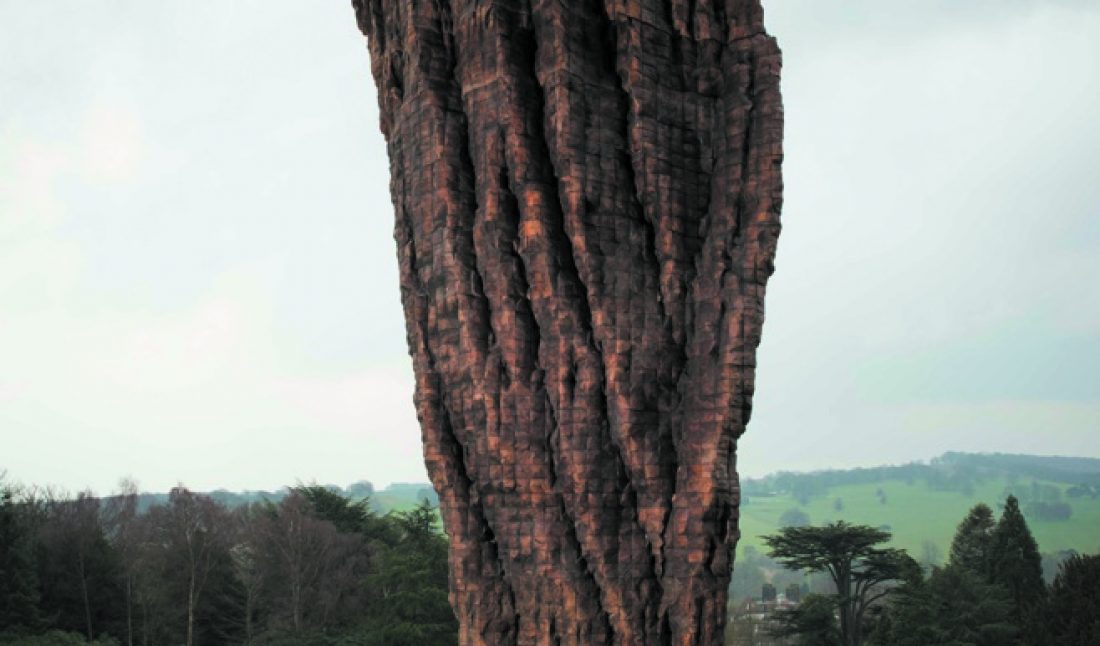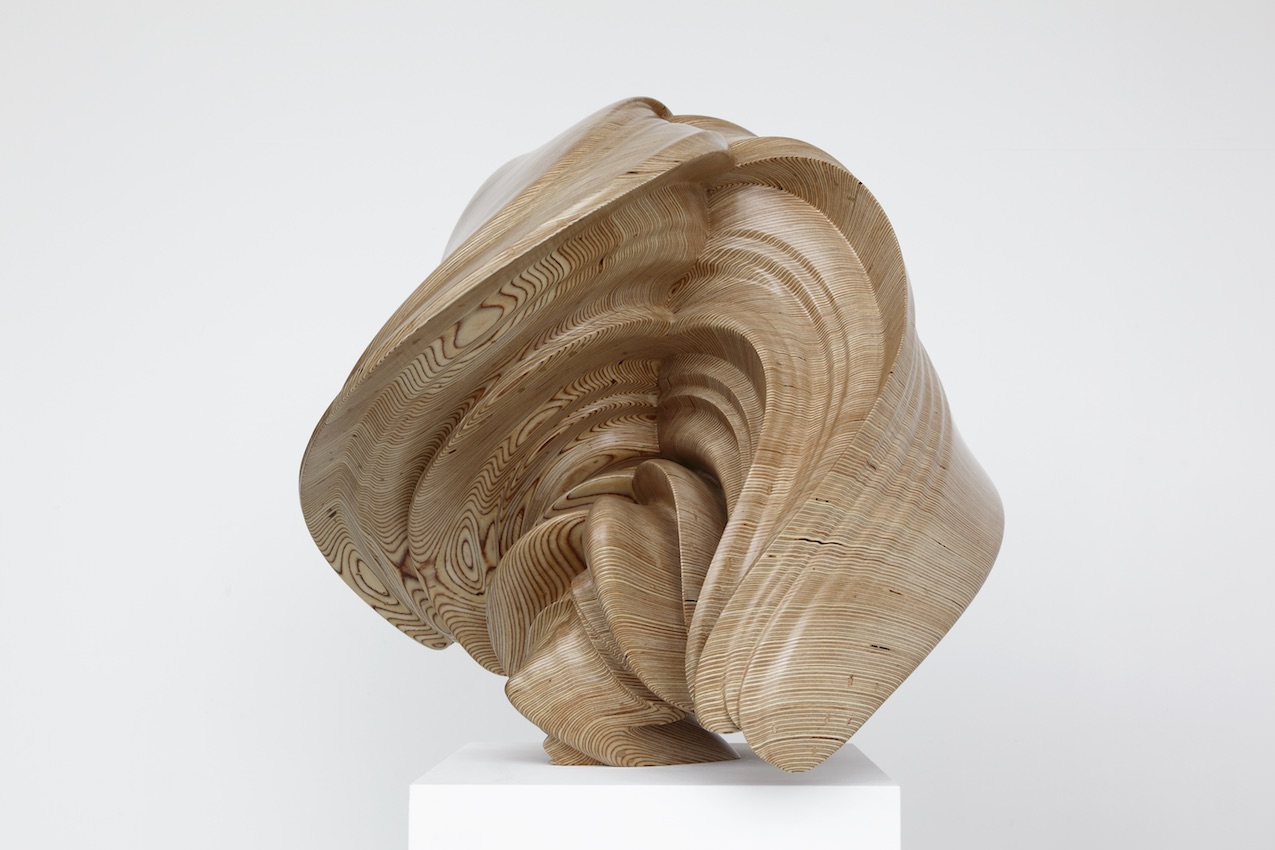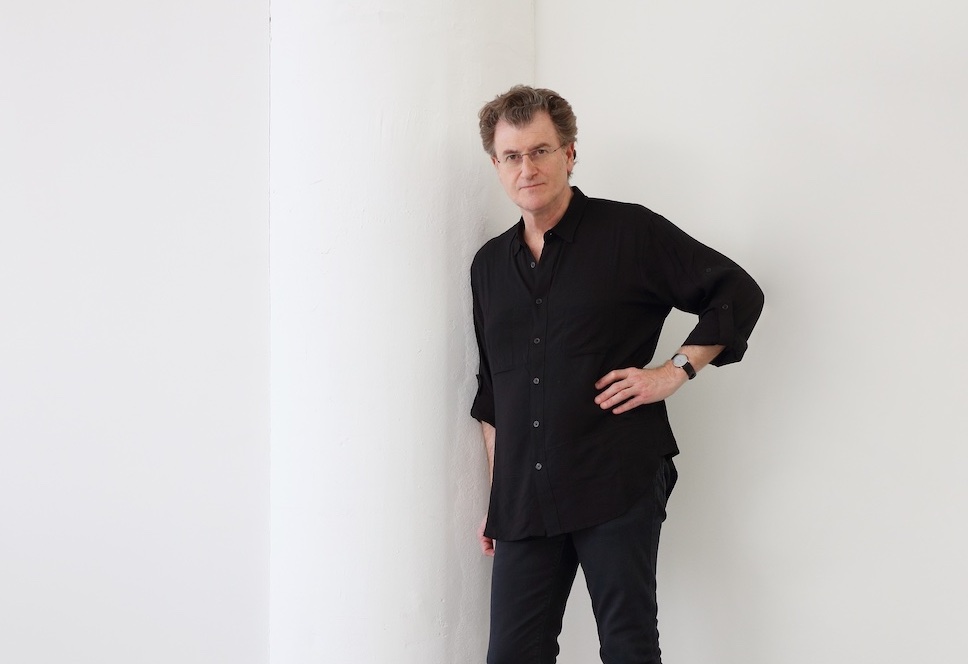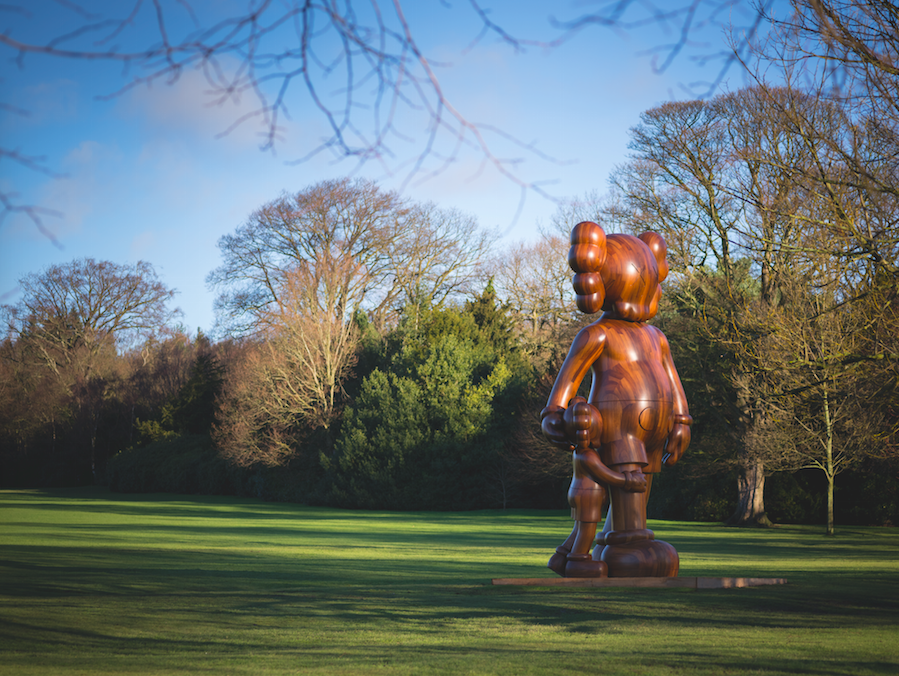This spring The Yorkshire Sculpture Park will display over 40 works of Ursula Von Rydingsvard, including several new massive site-specific sculptures. Though calling the works sculptures doesn’t quite do them justice, as the pieces remind one of sacred prehistoric monuments. Carved from wood and resin, the works seem atavistic in the manner they relate to the nature, yet are masterfully constructed. We talked with Rydingsvard about the new exhibit.
WHITEWALL: How do you relate to the material of cedar?
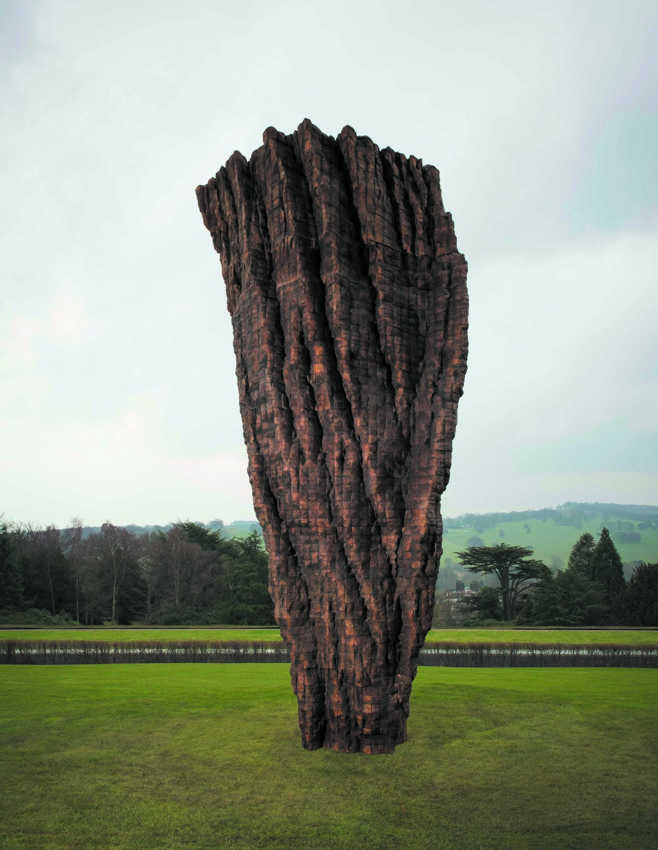 Ursula von Rydingsvard
Ursula von RydingsvardPierwsza
2012-14
cedar and graphite
Courtesy the artist, Galerie Lelong and YSP
Photo Jonty Wilde
URSULA VON RYDINGSVARD: I get my cedar from a mill in Vancouver, British Columbia. The important thing is that it is not a tree-trunk nor does it look anything like that. It does not have the seductive beauty of nature, it just is there to be worked with, pruned down to its simplest form.
My relationship to cedar is one that has a huge range of emotions connected to it. I cannot say I love wood because it’s much more complex. What I can say is it seems that over the last 30 years cedar has been the material that seemingly comes closest to saying what I need to say in a visual form.
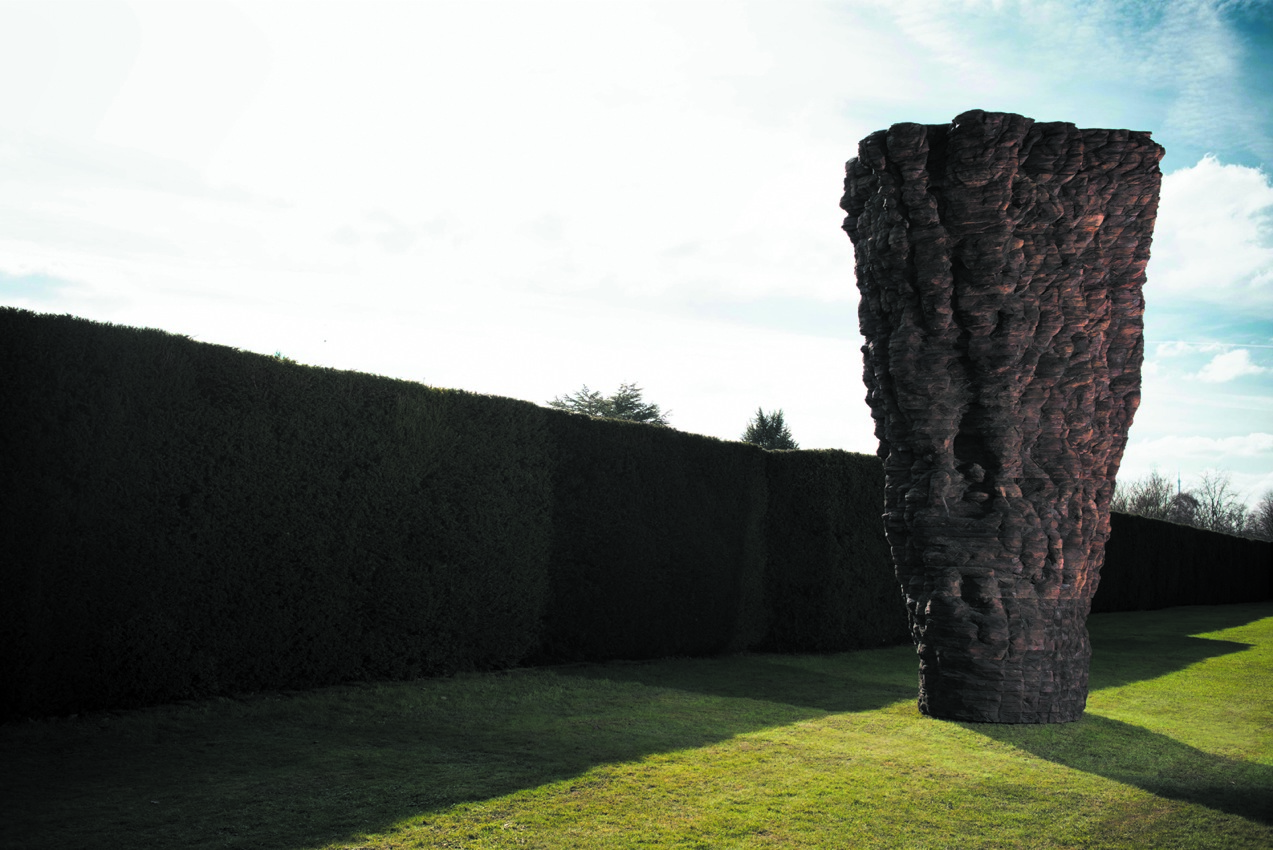 Ursula von Rydingsvard
Ursula von RydingsvardAnastazia
2013-14
cedar and graphite
Courtesy the artist, Galerie Lelong and YSP
Photo Jonty Wild
I have never used the trunk or the branches of the tree to carve. That was created by nature and it belongs to nature. I needed something that looked as though it had a much greater distance from what nature does.
WW: Your work, Damski Czepek, included in the exhibit at the Yorkshire Sculpture Park, is composed of polyurethrane resin. How is your process different when using synthetic materials?
UVR: For me the issue is not so much that the material is synthetic, but how can I take advantage of the quality that resin has that the wood does not. The resin is translucent, it can drink the light from the sun and play with it in a way that wood could not. Wood has its own way of playing with the sun but it will never be translucent. The light-beam plays all sorts of tricks and wanders in the detours it takes within the meat of the resin. It’s astonishing what the light can do in relation to resin depending on the position of the sun in the sky.
For Damski Czepek, I had in mind doing a cavernous form – a substantially sized cavernous form – that people can actually walk into. I did not want them to walk into a black or dark cave, so I needed to find another material and it took me a while to find something that dense, meaning that it could exist outdoors and that had the quality of flirting with the sun. I made the entire full-scale sculpture out of cedar and sent Damski Czepek to the Foundry to be cast resin.
I really have to have the right kind of structure, the right kind of look, the right kind of three-dimensional image, in order for the resin to work. And I think in the case of Damski Czepek it works well. The second piece that I have made in resin, Elegantka II, is here at YSP. It has the beautiful quality of being able to drink the light from the sun and to again maneuver it in the way that only this resin can. It this case too, I made the full-scale cedar model first before I submitted it to have it cast.
WW: Other more delicate works use materials such as cow intestines. How did you come to use animal products?
UVR: A number of years ago I was in Indiana doing a lecture at a university, when I was taken by one of the faculty members to see an exhibition that had to do with mid-west coast Indian art. I saw a parka that was made by the Indians, probably a couple hundred years ago, out of the bladder of a walrus. It’s a culture that knew the walrus well. In it they found that the bladder was water resistant, a protection from the rain. So, with enough bladders they were able, while the walrus’ bladder was wet, to sew them and make this parka. The parka I saw was hanging on a dowel, very much like the Japanese hang their kimonos. The dowel was threaded through the arms and I saw what the sunlight did as it came through, which amazed me. It seemed holy.
The only intestine I was able to get is the fourth stomach of a cow. That too, I sewed while wet. For this exhibition I made a lot of blankets out of the fourth stomach of a cow. When they dry, they dry in a way that’s very three-dimensional and very billowy.
WW: Are you working on any other upcoming projects?
UVR: I am very excited about my bronze princess (Bowl with Lace) coming here. She’s a piece that I have been working on for the past year and a half. She just came out of the foundry and was transported across the ocean. There’s going to be special amber lights that will come from where the lace begins on the top and will fade out as it goes up through the lace. It will feel as though there’s something very warm and welcoming on the inside of this sculpture.
My exhibition at Galerie Lelong opens October 24 in New York City. Very soon I am going to be installing a piece at the National Gallery in Washington DC called Five Cones.
In June there’s going to be an opening at the Chelsea Flower Show, that Luciano Giubbilei has designed the garden for, in which I have made a sculpture. He has spoken to me about a very special tree that’s going to be near my piece. I am quite confident that they will be able to speak to one another.
Ursula von Rydinsvard’s solo show at the Yorkshire Sculpture Park will be on viewApril 5, 2014 through January 4, 2015.






